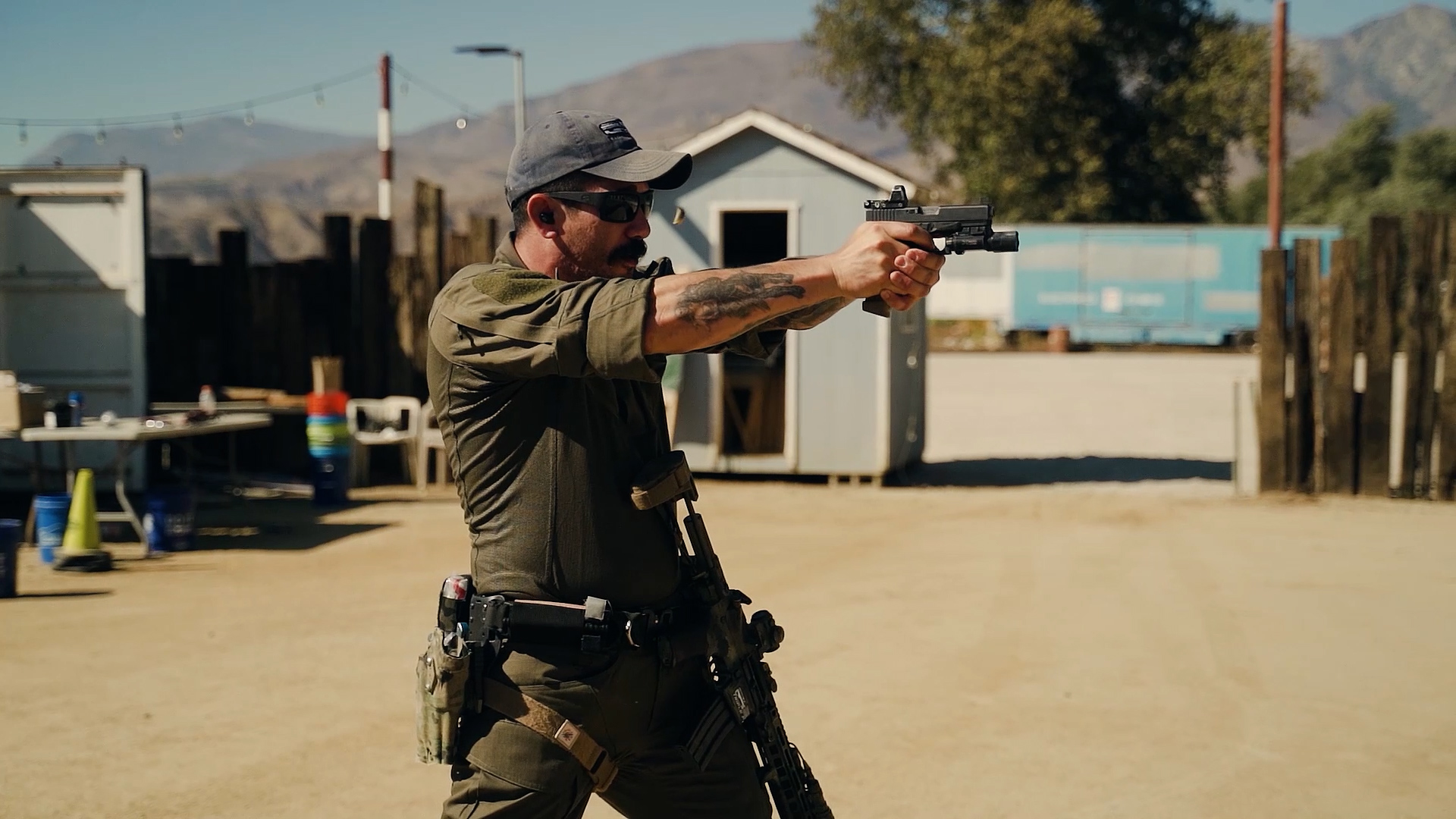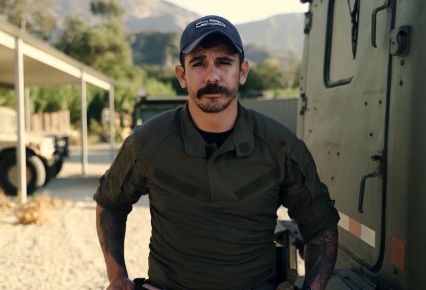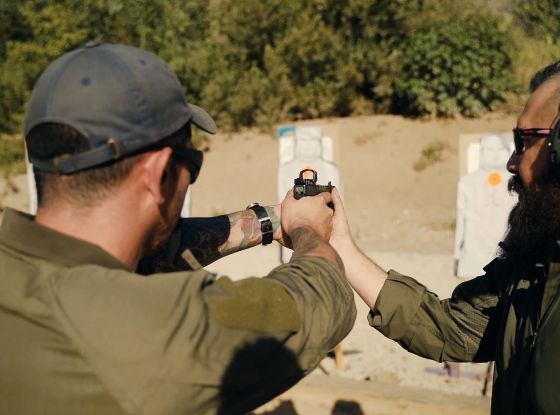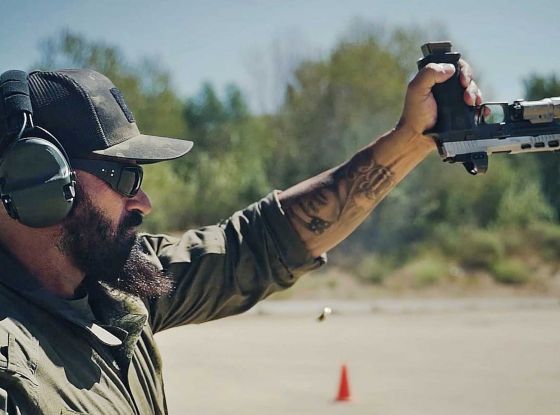Weapons transitioning requires practised use of a specific skill set. These skills enable a shooter to quickly, smoothly, and efficiently switch guns during an engagement with. Weapons transitioning is usually necessary during a firefight when the primary weapon (typically a carbine) stops working and the shooter must continue firing. This blog post presents a drill for learning one particular method of weapons transitioning.
In this blog post:
Introduction
You’re attempting to neutralise a threat by blazing away at him with your primary weapon—a carbine—when, suddenly, it stops working. You’re squeezing the trigger, but no more rounds are popping off.
What’s your next move? You of course reach for your sidearm so that you can continue firing.
But the way you acquire that secondary gun and what you do with the non-operational primary weapon can profoundly influence the outcome of the engagement—to the extent that you’ll either successfully eliminate the threat or he’ll eliminate you.
To prevail over an opponent, you must be able to switch quickly, smoothly, and efficiently from your primary weapon to your secondary—and, ideally, back to your primary if you can get it working again.
This is known as weapons transitioning.
In this post, you’ll learn how to maintain the advantage over a bad guy as you in seconds go from using a carbine to a holstered handgun.
However, a word of caution here. By reading this post you won’t learn any of the tactics associated with transitioning your weapons. Rather, you’ll learn only the mechanics involved in switching them.
Getting ready to practise weapons transitioning
The mechanics of transitioning your weapons are pretty simple and straightforward.
But before you can practise transitioning your weapons, you need to gear up.
First, pack your favourite carbine and sidearm into the boot of your car and head over to the range. Be sure to bring along ammo for both weapons plus magazines, a sling for the rifle, a holster for the pistol (or the revolver, if you’re totally old school), and anything else you’d customarily carry into to a firefight, such as pouches, body armour, tactical clothing, good-luck charms, and the like.
You also should bring a buddy to the range because you’re going to need someone to issue firing commands and to observe. If you can’t convince a pal to participate, then as an alternative you might consider arranging to have an instructor join you on the firing line.
Actually, working with an instructor could be just the ticket if your buddy isn’t someone already in possession of high-level shooting and weapons transitioning skills.
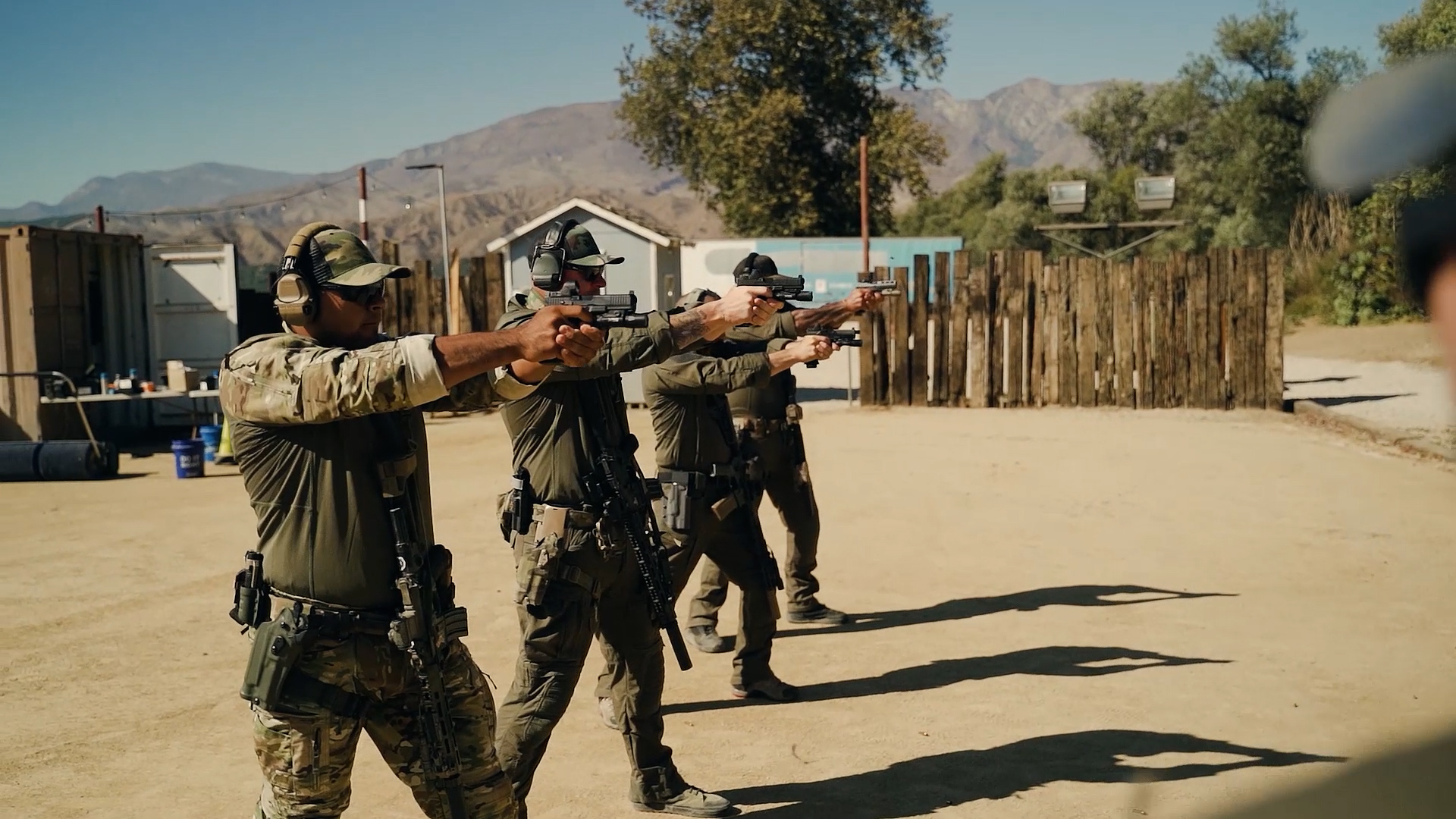
Practising at the range
There are a variety of ways to transition weapons. However, this post will spotlight just one of them—a method that many instructors prefer to teach. You’ll like it too, if for no reason other than it being relatively easy to master.
Begin by grabbing an empty magazine for your carbine. Load in one round only. Insert it into the carbine’s magazine well.
Now pick up a second empty magazine for your carbine but this time load it to full capacity. Park this second magazine in an ammo pouch attached to your belt or elsewhere on your person.
The purpose of loading only one round into the first magazine is to allow you to pretend that your weapon has stopped working. What’s going to happen is you’ll fire the carbine once and then won’t be able to take any more shots—just as would occur in real life were you to have started with a full magazine but then used up all the bullets or were your weapon to have suffered bolt lock.
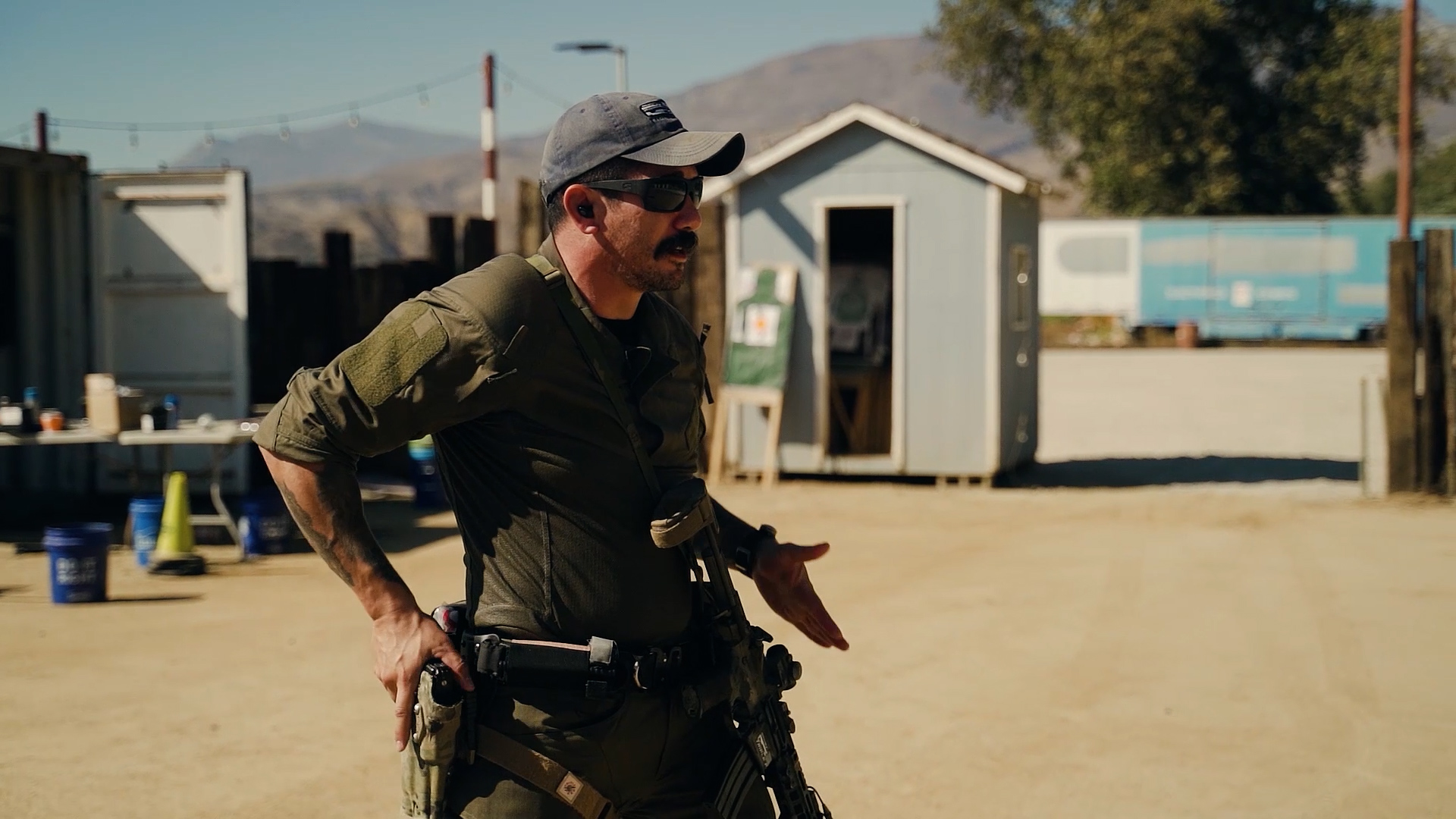
Next, sling the carbine and walk up to the firing line. Come up on the target. Wait for your buddy (or the instructor) to give the command to fire. Upon that command, attempt to repeatedly fire the carbine. You’ll of course only get off the one shot before the gun stops working.
Then, withdraw your finger from inside the trigger guard and raise that entire hand to the “safe” position while continuing to hold the carbine with the opposite hand (make sure the weapon remains pointed downrange).
Once your firing hand is in the safe position, lower the carbine using only your support-side hand. Lower it so that the weapon is pointing down (but away from your feet). If your support-side hand is your left, the carbine should be adjacent to your left hip and positioned so that its ejection port faces across, not in toward, your body.
For the record, some teach that a better method entails lowering the carbine as described above but instead positioning it straight down along your body’s centerline, with the ejector port facing in toward your belly button. One of the problems with this method is the carbine ends up perfectly positioned to slap you in your berries, which—if you get slapped hard enough—could instantly transition you from a baritone to a soprano.
With the carbine now lowered, remove your support-side hand from the weapon and allow the gun to hang by its strap.
As you remove your support-side hand, bring your other hand to the sidearm and follow these steps:
1. Take hold of the secondary weapon
2. Unholster it
3. Bring it up
4. Marry both hands together
5. Fire two or more rounds
6. Withdraw your trigger finger from the trigger guard and index it to the side of the frame
7. Visually scan from side to side and assess the threat
In an actual combat shooting situation, you may want to perform a tactical reload of your secondary weapon, but you should do so only if it’s genuinely necessary and if you have sufficient time.
Assume now that the threat has taken cover and is not yet returning fire. What you’ll do next is quickly examine your primary weapon to figure out what caused it to stop working (for purposes of this drill we’ll say it went quiet because you emptied the magazine, which in fact you did).
To examine the primary weapon, raise it with your support-side hand. Raise it up enough to allow you to see what's wrong. Meanwhile, be sure to keep that handgun up and ready as you examine the carbine so that you can immediately open fire if you have to.
In this drill, as noted above, the problem is the carbine’s magazine is empty. After you determine this to be the case, holster your secondary weapon to free up your dominant hand. You’re going to need that hand in order to retrieve the fresh full magazine from its pouch and insert it into the carbine’s well. Keep the carbine up as you eject and replace the empty magazine.
Now bring the carbine up to shoulder level in fire-ready position, visually scan from side to side, assess the threat situation, and respond accordingly.
That’s all there is to it.
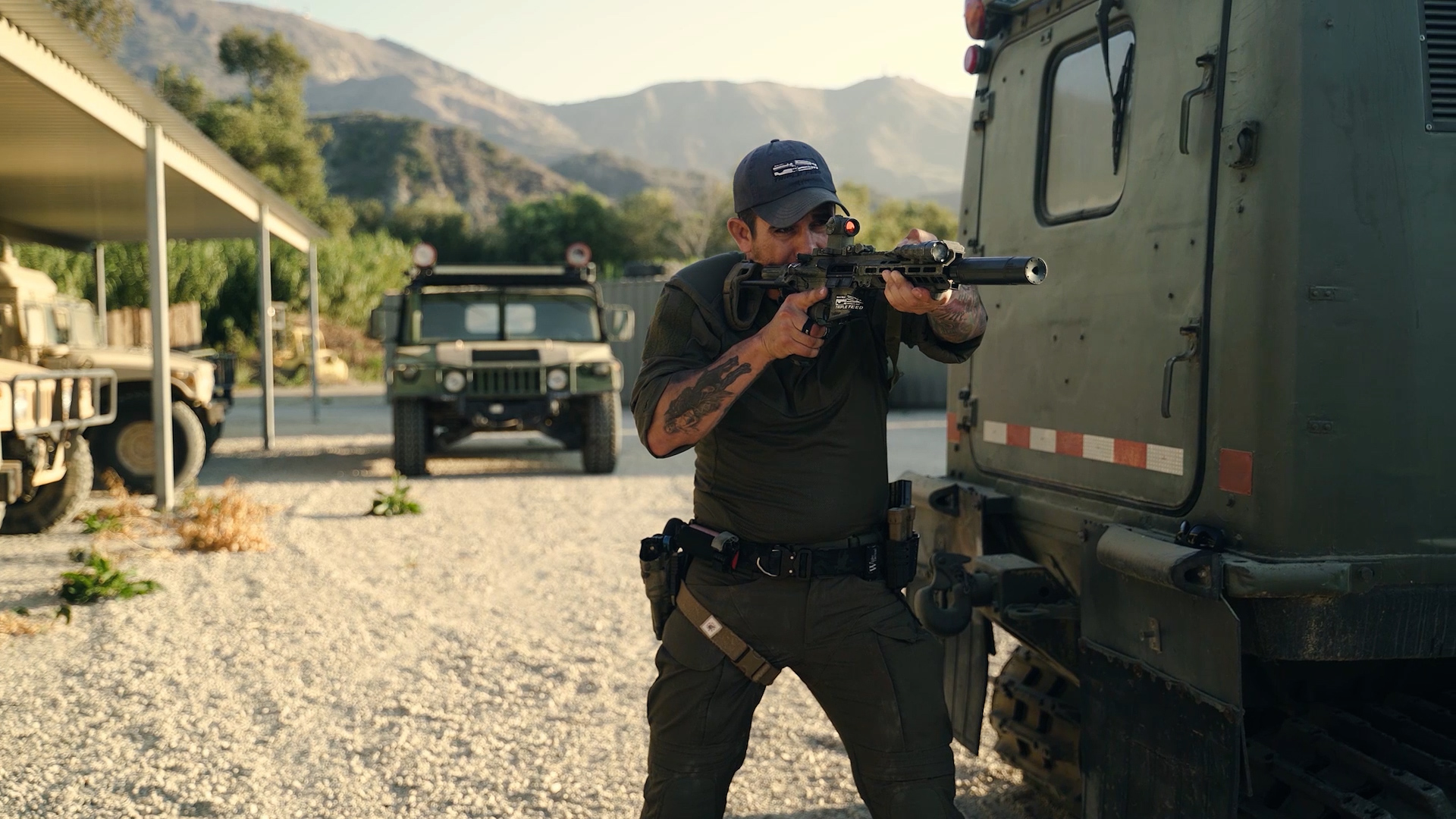
Final thoughts
Becoming proficient at weapons transitioning is a must-have skill if you want to increase your odds of surviving an engagement with an armed threat.
The first time you perform this drill, fire each weapon at a slow pace, maybe about half your normal speed. The goal at the beginning is to achieve consistency with the mechanics of weapons transitioning. Your speed will increase as you become more proficient.
Just be sure to practise the mechanics of weapons transitioning on a fairly frequent basis. To get good at this, you’ll need to drill for at least a week or more. But it’ll be well worth the investment of your time.
Want to see the drill described in this post demonstrated on video? Tune in to the final episode of the four-part UF PRO Firearm Instructor Series. Watch it here. Other topics presented in the series include sighting deficiencies, trigger control and manipulation, and recoil management.
---
Never miss the release of future UF PRO video episodes and series. Each gives you indispensable knowledge presented by subject-matter experts from around the tactical world. All you have to do to receive word of the next one’s imminent arrival is to sign up for the UF PRO Firearm Instructor Series here.

